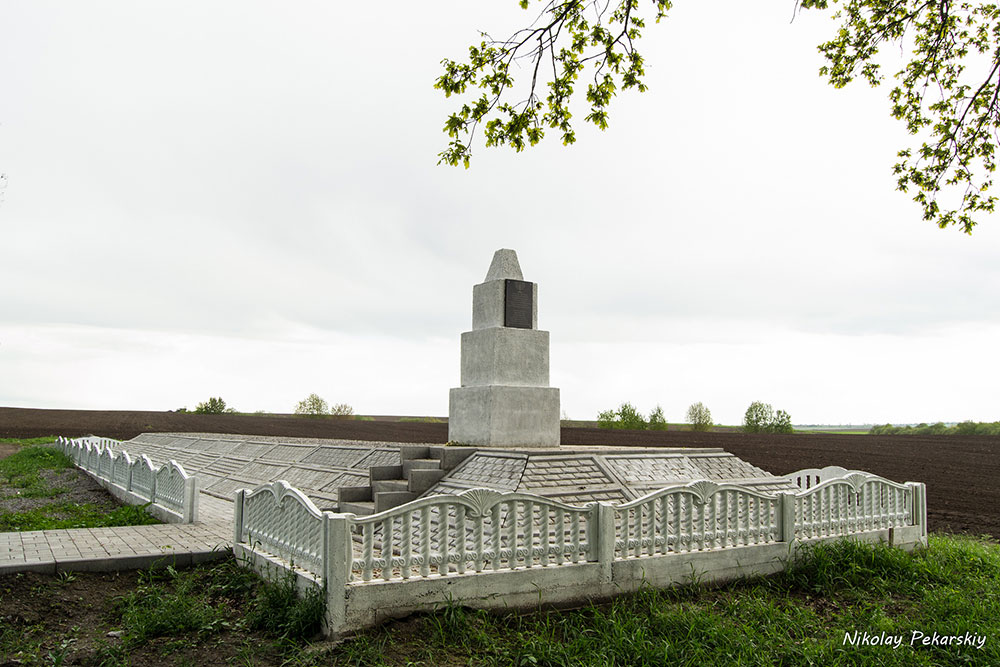
The village of Manevtsy in the Krasilovsky district of the Kamenetz-Podolsk (now Khmelnitsky) region was occupied by German troops in July 1941. It was part of the Volyn-Podillya okrug of the Reichskommissariat Ukraine. In July 1942, prisoners from the Krasilovsky, Kulchinsky and Bazali ghettos, as well as from the labor camp in the village of Veliky Orlintsy, were brought to Manevtsy where they were murdered en masse.
THE FULL DOCUMENT IS AVAILABLE IN THE RUSSIAN LANGUAGE. The Google Browser has an on-board translater which will translate the documents into English or other languages. A translator can be added to other browsers (Safari, Firefox, etc.). If this document was displayed on Google, clicking READ MORE on any of the items may display in Russian.
The answers to these questions were sought by the Extraordinary State Commission, which worked in Manevtsy in the spring of 1944.
The answers to these questions were sought by the Extraordinary State Commission, which worked in Manevtsy in the spring of 1944.
Creation of a commission in the USSR
The idea ofcreating an Extraordinary State Commission (hereinafter ChGK) appeared in mid-1942 in the Department of Propaganda and Agitation of the Central Committee of the CPSU (B.) .
On July 20, 1942, the head of the Propaganda and Agitation Directorate, G.F. Alexandrov, sent the People's Commissar of Foreign Affairs V.M. Molotov and the secretaries of the Central Committee of the CPSU (B.) A.A. Andreev, G.M. Malenkov, A.S. Shcherbakov letters.
July 20, 1942 - the first draft of the resolution of the Central Committee of the CPSU (B.) On the ChGK.
In mid-October 1942, a draft decree establishing the Commission was sent to V. M. Molotov and A. S. Shcherbakov.
On November 2, 1942, the Presidium of the Supreme Soviet of the USSR issued a decree “On the formation of an extraordinary state commission to establish and investigate the atrocities of the Nazi invaders and their accomplices and the damage they caused to citizens, collective farms, public organizations, state enterprises and institutions of the USSR”
To conduct business, the Secretariat of the Commission was formed from 8 divisions and an executive secretary.
On March 16, 1943, by decree No. 229, republican, provincial and regional commissions were created.
The ChGK on the identification and investigation of the atrocities of the Nazi invaders and their accomplices developed "Guidelines on the procedure for identifying and investigating the atrocities of the Nazi invaders and their accomplices."
And also were given “Instructions for drawing up and checking acts on accounting for damage caused by the Nazi invaders”.
Instructions in 1944 were approved by the Executive Secretary of the Extraordinary State Commission, Epiphany P.
According to these instructions, “The atrocities of the Nazi invaders and their accomplices are committed in various forms. The main ones are:
a) the destruction of civilians;
b) violence and bullying, torture of defenseless people - women, children and the elderly;
c) the theft of Soviet people into German slavery;
d) the destruction of prisoners of war, sick and wounded, military personnel;
e) the deliberate destruction of industry, historical and other monuments. ”
Members of the State Extraordinary Commission for the Establishment and Investigation of the Crimes of Nazi Invaders and Their Accomplices in Babi Yar, 1944. Among the members of the commission are military men, doctors, lawyers, and rabbis.
The task of the assistance commissions is for each case of crime to establish in detail the time, place and method of committing the crime.
These tasks were assigned to the regional and district commissions.
In the territory of the Kamenetz-Podolsk region (today it is the Khmelnitsky region), the Kamenetz-Podolsk regional commission assisted the Extraordinary State Commission for identifying and investigating the atrocities of the Nazi invaders and their accomplices and the damage they caused to citizens, collective farms, public organizations, state enterprises and institutions of the USSR .
He supervised the work of the commission, the implementation and deadlines of the Kamenetz-Podolsky regional committee of the Communist Party of Ukraine.
In the Krasilovsky district, then there were two district commissions: the Krasilovsky district commission (in charge of the Krasilovsky district) and the Antoninsky district commission (in charge of the Antoninsky district).
According to the terms of the ChGK, the Kamenetz-Podolsk regional commission set deadlines for district commissions to establish an investigation into the atrocities of the Nazi invaders and their accomplices and the damage they caused to citizens, collective farms, public organizations, state enterprises and institutions, and to provide the districts with acts, registers and summary statements .
The district commissions were to submit all documents by June 1, 1944. The Secretary of the Kamenetz-Podolsky Regional Committee of the Communist Party (O) U A. Ustenko signed this resolution.
It turns out that ChGK worked in the Krasilovsky and Antoninsky districts in the spring of 1944.
According to the instructions of the ChGK, the local commissions were to investigate the crimes of the Nazi invaders and their accomplices in detail. This meant interrogating witnesses, examining documentation and lists, establishing places of mass executions, and then excavating these graves to determine the number of victims, their nationality, age, and method of liquidation.
In some places of the Kamenetz-Podolsk region, local commissions did exhume the bodies of the dead. For example, as it was in Slavut, on the territory of the former Soviet military unit
But, in the Khmelnitsky State Archive, I did not find acts of our district commissions that testify to the exhumation, the establishment of nationality and the exact number of victims. In fact, the District Commissions made their conclusions based only on interrogations of witnesses. Moreover, the content of some protocols of witness interrogation is the same for different witnesses, which indicates that the prosecutor's office entered one certificate for different witnesses.
A study of the R-863 fund of the Khmelnitsky State Archive also shows that the district commissions didn’t submit the statements on time, there were inaccuracies in the statements themselves, the deadlines for submitting the statements and registers were disrupted.
Kamenetz-Podolsky Regional Committee of the Communist Party (o) U warned the leaders of the commissions of the responsibility that they will bear for failure to meet the deadlines for the submission of statements.
The Kamenetz-Podolsk regional commission compiled a “Register of acts on the establishment of the atrocities of the Nazi invaders and their accomplices in the territory of the Kamenetz-Podolsk region”. The registry was submitted by the Extraordinary State Commission.
Number of victims
In the context of my research, I was primarily interested in the places of mass executions in the village of Manevtsy (today it is the Krasilovsky district, Khmelnitsky region, Ukraine). How many people were shot there and who were they?
So, how many people were shot in the village of Manevtsy? And who were they by nationality?
According to the acts of the district commissions:
1. The commissions call the dead - Soviet citizens without specifying their nationality.
2. The total number of victims - 4800 people.
a) The Antoninsky district commission indicates 300 people who were shot in the village of Manevtsy in June 1942. According to the act of the commission of 5 (9?) June 1944.
The list of criminals who are responsible for this crime: Shorer Harold (Gebistkomisar), Pankov, Werner (Winkler?), Friedrich, Paul, Turner, Gerard (Garard?).
b) the Krasilovsk regional commission indicates 4,500 people who were shot in the village of Manevtsy, the village of Kulchiny in July 1942. According to the act of the commission of June 10, 1944.
The list of criminals who are responsible for this crime: Schmidt (gendarme), Yusyk, Yatsorik.
The same numbers are indicated in the “Consolidated statement”.
So, what do the conclusions (statements, acts and registers) of the district commissions give us?
1) the dates and places of mass executions
are indicated 2) the criminals responsible for these atrocities and their accomplices are
indicated 3) a certain number of victims is indicated
Who were these Soviet citizens and why were they shot?
The testimony and interrogation protocols conducted by the Prosecutor's Office help us answer this question. The district commissions had the right to engage any competent authorities and departments in the work to investigate the atrocities of the Nazi invaders and their accomplices.
There are three types of sources available in the Khmelnitsky Regional State Archive:
- testimonies of local residents
- testimonies of people who miraculously escaped death
- protocols of interrogations of former policemen and collaborators
Most of the witnesses questioned by the Prosecutor's Office claim in their testimonies that they were Soviet civilians - men, women, children and the elderly. They were not partisans, they did not take part in the resistance movement, they were not Soviet soldiers and prisoners of war.
But, they were treated like cattle, humiliating and mocking. These people were not fed, they were kept in confined spaces (ghettos, stables, etc.), they were not provided with medical care, their property was seized, their houses were destroyed by fire, and the ashes were resettled (in search of jewelry). These people were forced to work hard. In most cases, in such work there was no sense and logic. The German occupiers promised a good reward for these people. Locals who know the area well, they were caught and handed over a bottle of moonshine. And the population as a whole was intimidated and afraid to help these unfortunate people. Germans were shot by entire families for providing assistance.
Who were these people? It seems the whole world has turned away from them!
Witnesses clearly identify this group - these are Jews.
The “crime” of these people was only that they were born Jews! The merciless machine of the Third Reich, without any sympathy, with particular cruelty, grind everyone: strong and weak, sick and healthy, young and old, adults and children.
Sometimes, for the unfortunate, they even felt sorry for the bullet - they were simply buried alive.
Given all the available sources, we can be sure that in the three mass graves near Manevtsy lie exclusively peaceful, Soviet citizens of Jewish nationality.
To date, I do not have exact numbers of all the dead Jews in the Krasilovsky and Antoninsky districts, Kamenetz-Podolsky Oblast. One thing is clear that the number of victims can exceed 4800 people. How many Jews died in the ghetto from starvation and disease, how many were shot in the cities and on the way to the place of execution. Who counted them?
A very important and invaluable source that sheds light on the events of the past is the testimony of the surviving Jews themselves.
Unfortunately, these names are few:
- Basia Tencer , a Jew, during the execution, fell into the pit along with the dead. When night fell, she got out of the pit and ran into the forest.
- Faina Gruber - a Jewess, during the execution, fell into the pit, her bullet did not hurt. For a long time lay unconscious. When night fell, she regained consciousness and got out of the pit.
- Weiner Arkady - a Jew, in 1942 he turned 13 years old. One of the summer days, Arkady, his relatives and other prisoners were taken to the execution pit. He kicked the policeman with all his strength and jumped out of the car. He was wounded during the escape.
- Moses Meerovich Katz- a Jew, was in the Krasilovsky ghetto, worked in a labor camp in the village of Veliky Orlintsy. Before the final liquidation, he escaped from the Krasilovsky ghetto.
Sources:
Khmelnitsky Regional State Archive (R-863 Fund, Inventory No. 2, file No. 38; R-863 Fund, Inventory No. 2, file No. 46; R-863 Fund, Inventory No. 2, file No. 39; R-863 Fund, Inventory No. 2, case No. 30; Fund R-863, Inventory No. 2, case No. 44)
Krasilovsky District State Archive
On May 6, I visited the third mass grave, which is located in the village of Rosolovtsy (near the village of Manevtsy). It was reported that near the grave, the local village council makes a breakdown on the field
This mass grave is located on the field sown by a local private entrepreneur from the village of Rosolovtsy. But the site, itself is legally assigned to the Rosolovetsky village council.
There are no approaches or entrances to the grave. Also, there is no adjacent territory near the grave. Behind the fence, graves are almost immediately sown with agricultural crops. All this is a violation of the law on the preservation of historical monuments.
Last year, negotiations with the Rosolovetsky village council did not lead to specific agreements. Although, the chairman of the village council (V.M. Kovalchuk) promised that the reconstruction can be done after the harvest in August 2016. But then, referring to the words of a private entrepreneur, he refused his words.
This year, with the help of activists and lawyers from the Khmelnitsky charity organization “Hesed Besht”, negotiations with the local authorities were resumed. For a positive resolution of the issue, representatives of the Khmelnitsky regional administration, television, as well as representatives of the Krasilov district administration were connected.
As far as I know, the question of the road to the grave and the adjacent territory has been resolved positively. Guidelines have already been laid near the grave (breakdown).
I want to show you the Jewish mass graves in Manevtsy after repair and with signs. In fact, on this reconstruction of the first two graves is completely completed.
First grave

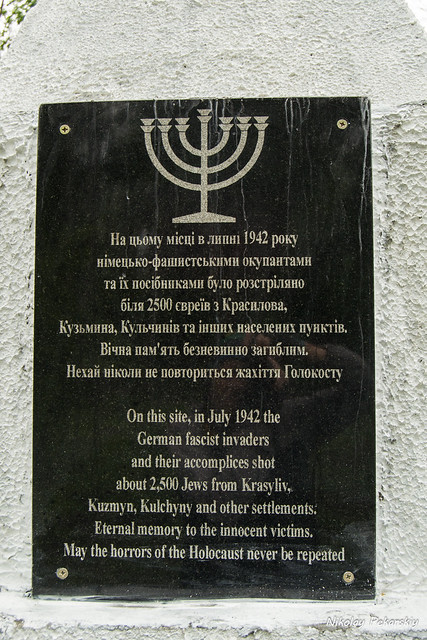
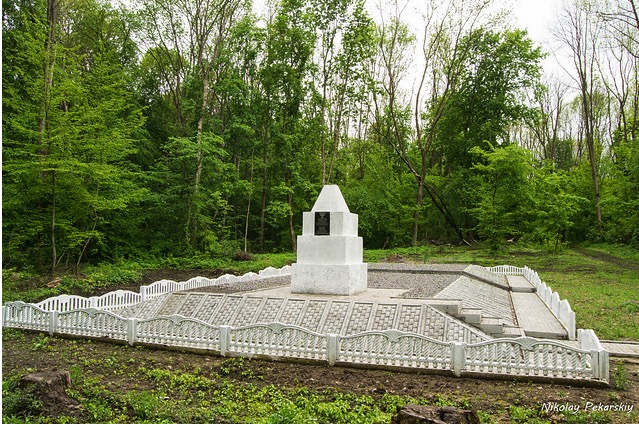
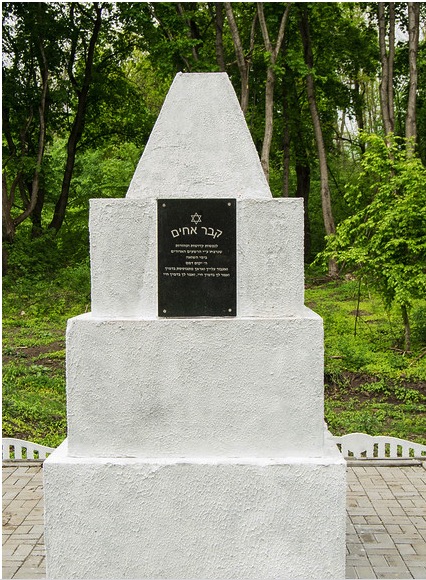
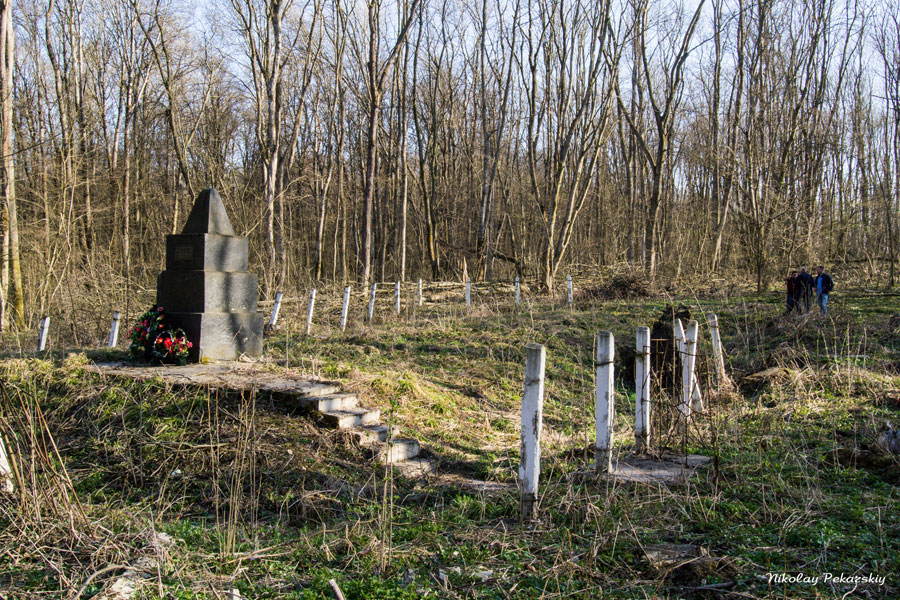
Translation from Hebrew
CROSS BROTHERS
For the souls of saints and pure, killed by damned villains in the days of Shoa.
The Lord will avenge your blood.
But I passed you, and I saw you, trampled, in your blood, and I said to you: “Live in your blood!”
And I told you: “Live in your blood!”
The passage in the text is taken from the book of the prophet Ezekiel 16: 6.
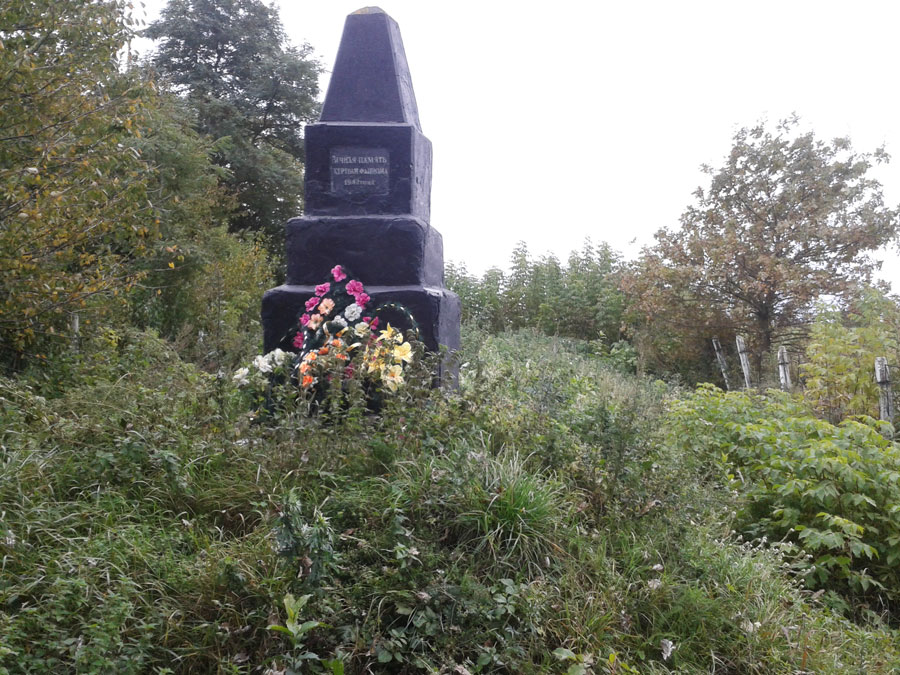
The publication in the form of photographs presents the state of mass graves at different times. The record will be updated.
Big mass grave in the forest of the village of Manevtsy (first grave)
The second mass grave in the forest of the village of Manevtsy
The third mass grave in the field of the village of Rosolovtsy
In the village of Manivtsi (Krasilivskyi borough, Khmelnitsky region), I’m working on working robots to the great brotherly graves, which can be found in the village near the village.
CLICK HERE FOR A PHOTOGRAPHIC RECORD OF THE MONUMENT CONSTRUCTION
13 Lipnya 2015 p. director of the Khmelnitsky Charity Fund "Hesed Besht" Igor Town Hall vvdvidav єvreyskі brotherly graves in Manivtsy and Rosolivtsy (Krasilivskyi district).
During his visit, he met with participants in a project to restore monuments to Holocaust victims. The purpose of the meeting was to identify and discuss possible features and options during the restoration work.
Igor Ratushny shared his vision of the project and provided the necessary advice. He will also coordinate the work of the active group.
July 13, 2015 director Khmelnitsky Charitable Foundation “Hesed Besht” Igor Ratushny visited Jewish mass graves in Manivtsy and Rosolivtsy (Krasylivsky district).
During his visit, he met with participants of the project to restore monuments to the victims of the Holocaust. The purpose of the meeting was to identify and discuss possible features and options during the restoration works.
Igor Ratushny shared his vision of the project and given the necessary advice. It will also coordinate the active group.

At the Jewish mass grave in the forest (Manivtsi village). In the photo: on the left - Ihor Dyachuk (chairman of the Manivets village council), in the center - Ihor Ratushny, on the right - Arkady Weiner, near the monument - Oleksandr (a builder from Khmelnytsky).
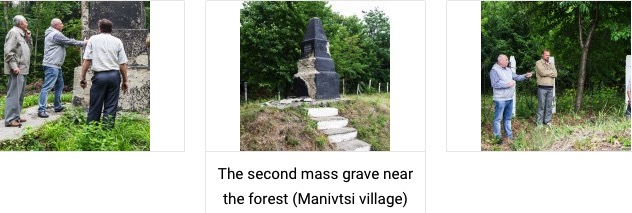

Reconstruction of monuments to the victims of the Holocaust of 1942 (v. Manevtsy, v. Rosolovtsy). Chronology of events.
CHRONOLOGY
September 2015 - reconstruction of the second mass grave in the forest of the village of Manevtsy
July-September 2015 - reconstruction of a large mass grave in the forest of the village of Manevtsy (first grave)
05/16/2015 - clearing and preparing the territory of a large mass grave in the forest of the village of Manevtsy.
April-May 2015 - clarification of the project, budgeting and search for performers.
September 27, 2014 - Mikhail Vulakh visited monuments in Manevtsy and Rosolovtsy.
August 2014 - Nikolai Pekarsky addresses the Embassy of the Federal Republic of Germany in Kiev with a request to financially assist in the reconstruction of monuments. 08/29/2014 - the answer came: refusal, no money.
August 2014 - Permission to replace the monuments in Maneuvtsi was obtained from Kiev (decision dated 07-23-2014).
[stextbox id = ”info”] The Ministry of Culture of Ukraine examined the list of government and cultural management, nationalities and relations of the Khmelnytsky regional state administration on June 18, 2014, No. 04-942, which was fully revised. at the bottom of the cultural recession of the last sign on the graves of the victims of fascism, who were confiscated near the village of Manivtsi Manivets'kyi for the sake of the Krasylivskyi district of the Khmelnytsky region.June 2014 - Decision of the Manevets Village Council on the need to replace historical monuments to the victims of the Holocaust. A meeting of a special commission in Krasilov on the replacement of monuments was held. Documents sent to Kiev.
May 27, 2014 - The Commission for the Inventory of Cultural Heritage Sites inspected the monuments to the “Victims of Fascism 1942” in Manevtsy and Rosolovtsy
May 2014 - Manevets Village Council cleared the territory of the monuments from growing and fallen trees.
May 9, 2014 - a visit to the monuments in Maneuvts on Victory Day .
April 15, 2014 - a trip to the Khmelnitsky State Archive. Search for documents, protocols and evidence related to burial places near Manevtsy and Rosolovtsy. Task: find facts indicating that only Jews are buried in the graves.
April 10, 2014 - Nikolai Pekarsky and Igor Dyachuk (chairman of the Manevets Village Council) went to Khmelnitsky, to the “Department for the Protection of Monuments of History and Culture” on the issues of our monuments. Outlined next steps.
January 9, 2014 - Letter to all those who care
October 2, 2013 - Jewish Krasilov visited the Monuments to the Victims of Fascism in 1942. Objective: assessment of the condition of the monuments.
April 2013 - Arkady Weiner turns to German Chancellor Angela Merkel with a request to help finance the reconstruction of monuments. He receives a response (05/16/2014) with a request to contact the Embassy of the Federal Republic of Germany in Kiev.
February 6, 2013 - Jewish Krasilov first visited the Monuments to the “Victims of Fascism 1942”
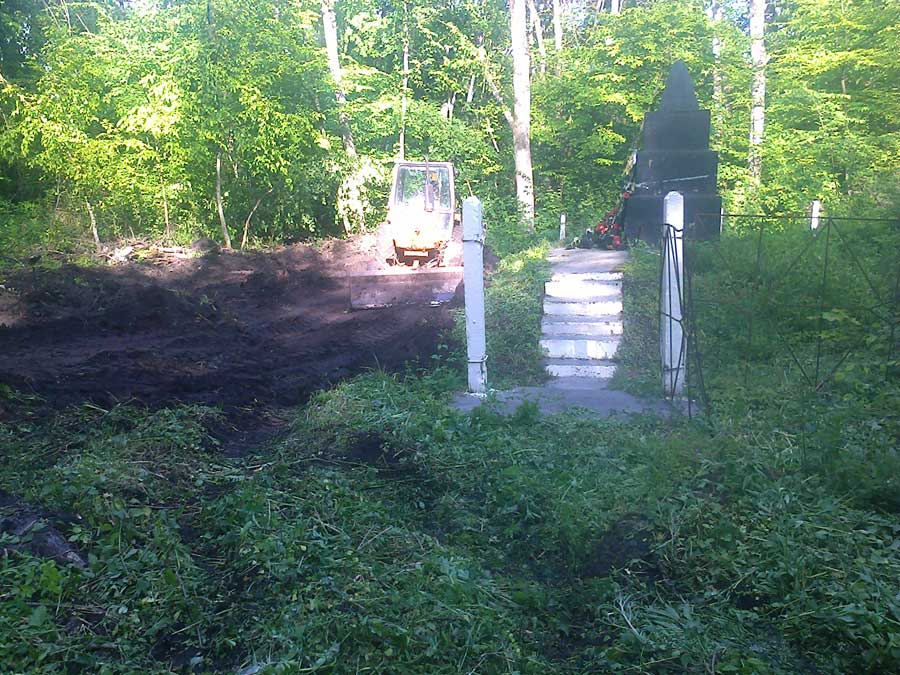
On May 16, clearing and preparation of the territory of the large mass grave in the forest of the village of Manevtsy began.
Land leveling, uprooting of stumps, and clearing of the territory were carried out. Preparatory work continues.
May 16 began cleaning and preparing a large mass grave in the forest village Manevtsy. There have been leveling land, uprooting stumps, cleaning of the territory. Preparatory work is continuing.




In the village of Manivtsi, the Krasilivsk district of the school and those who attended the school, before the Day of Peremogi, they cleaned up the territory of historical monuments to the victims of the Holocaust.
23 april, with awaiting the remembrance of the victims of the Holocaust, as well as up to the 71st richest vis-à-vis oblast fascist zagarbniks in the Central district on a biblical library with the District Budinki
April 11, 2015 in the village of Manevtsy, near the monument “To the Victims of Fascism 1942” A meeting of people responsible for the reconstruction of monuments took place.
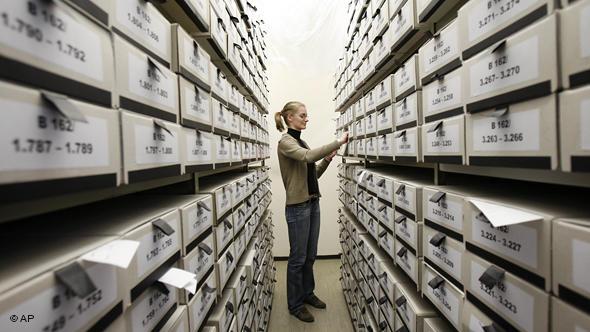
Protocol of interrogation of Leonid Dmitriyevich Pilipyuk Certified copy Protocol of interrogation of the accused Starokonstantinov, April 26, 1947 I, a senior investigator of the district under the Ministry of State Security of the 24th Mechanized Division
Arkady Petrovich Weiner, our friend from Khmelnitsky, in April 2013 turned directly to German Chancellor Angela Merkel. Weiner asked for money for the restoration of monuments.
Mikhail is the nephew of Faina Gorokhovskaya and the grandson of Mikhail Vulakh Vulakh (founder of the Krasilovsky Museum of Local Lore, junior lieutenant, commander of a division intelligence platoon. Local historian, history researcher.).
Mikhail Vulakh revealed a desire to help the project on the replacement of monuments and actively involved in this process. He took two of his relatives from Krasilov with him to Manevtsy. These people have experience in construction and have the appropriate resources.
Mikhail and his relatives from Krasilov approached the project with maximum attention and participation.
In Manevtsy we met with Igor Dyachuk and together visited the monuments.
In the process, we discussed the state of the project: at what stage it is, what is needed, what is the best way and when to begin restoration work.
At the moment, the situation is as follows: permission came from Kiev to replace the monuments in Maneuvts; documents for the monument in Rosolovtsy were not sent to Khmelnitsky.
Invalid Displayed Gallery
What have you come to?
Restoration work will begin in the spring of 2015. The first to go will be a large monument in the forest. It is planned to overhaul the territory, replace the fence, lay a path around the embankment.
Next in line will be the second monument in the village of Manevtsy, the one in the neighborhood. A complete replacement awaits him.
After this, the turn will reach the monument in the field of the village of Rosolovtsy.
The question of roads, entrances to the monuments is not at all worthwhile. All attention will be concentrated on the monuments themselves and their territories.
On September 27, 2014, Mikhail Vulakh (a private entrepreneur from Kiev) visited the Jewish mass graves near Manevtsy and Rosolovtsy.
On May 27, 2014, the Commission for the Inventory of Cultural Heritage Sites inspected the monuments to “Victims of Fascism 1942” in Manevtsy and Rosolovtsy (Krasilovsky district, Khmelnitsky region) and studied their condition, which was the relevant acts.
The commission on the spot was accompanied by: Sergey Melnichuk (representative from the Department of Culture at the Krasilovsky District Administration), Igor Dyachuk (chairman of the Manevets Village Council), Vladimir Furman (director of the Michurin JLLC), Nikolai Pekarsky (representative from the Jewish public).
This was the first step. Next step: a meeting of the Advisory Council on the Protection of Cultural Heritage in Khmelnitsky, at which the Commission on Inventory will make its report.
A meeting of the council is planned either this month or next year. Most likely it will be in June.
Meanwhile, the Regional Office of Agrolez cuts trees on the territory of the large mass grave and around it. Thus, the territory is cleared from growing trees and lying trees on the territory itself, as well as from trees located near monuments that can fall and cause possible destruction of mass graves.
I want to note that the sweeping of the territory creates for construction crews and equipment better access to mass graves in the future perspective of replacing monuments and fences.
For such close attention of Agrolez to the problem of the destruction of monuments, we owe Weiner Arkady. Thanks to his insistent requests, the cutting of trees and the cleaning of the territory began.
Visit to the ancient mound in the village of Manevtsy
During their stay in the village of Manevtsy, the commission also examined two barrows, which date back to the times of the Tatar-Cossack wars in 1593.
In 1593, the Crimean Tatars during their great campaign in Ukraine, Maneuvts completely ruined. Residents courageously defended themselves, but were broken under the pressure of the Tatars.
After the Tatars left, the villagers who were hiding in the forests buried the dead in two graves. The bodies of the killed Cossacks and villagers were piled into one. A stone cross was placed on the grave, which has been preserved to this day. Local peasants claim that rich treasures are hidden under this cross. And in the second grave, the dead Tatars were buried.

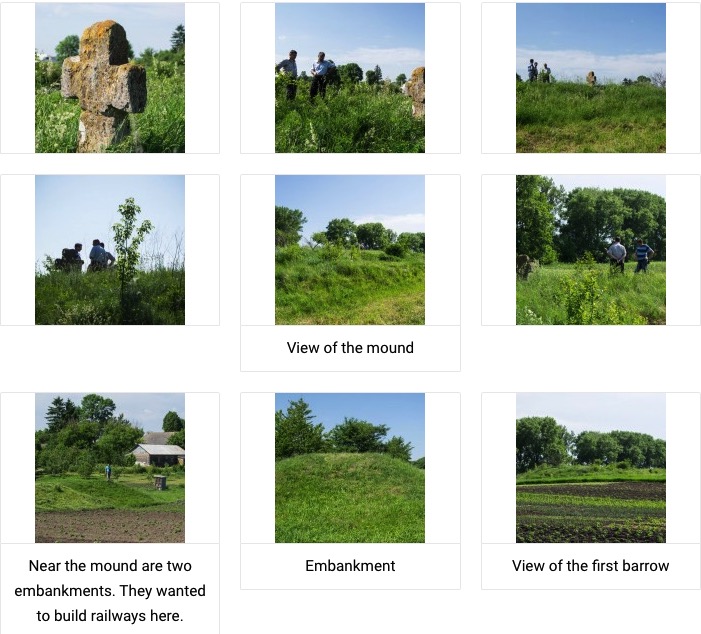
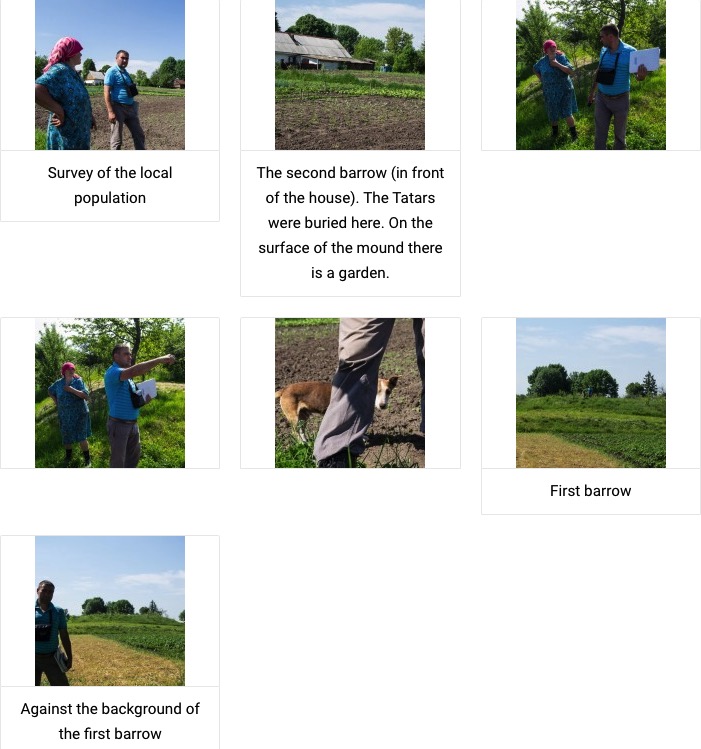
On May 9, 2014, events dedicated to the 69th anniversary of the victory in the Second World War of 1939-1945 took place in the village of Manivka.
The rally took place near the monument to the Heroes of the Fallen in the Battles of the Motherland 1941-1945. The chairman of Manivets village council Ihor Dyachuk addressed all those present with a speech. He congratulated everyone on Victory Day and stressed that we must remember and honor those who defended our country from fascist invaders. Their names will always remain in our hearts. We remember their great feat.
Pupils of the local school, who read poems and sang songs dedicated to the heroes of the Great Patriotic War, addressed the audience.
Then, all participants of the rally honored the fallen soldiers who defended their native lands with a moment of silence and laying fresh flowers and wreaths at the foot of the monument.
After the rally, the chairman of the village council Dyachuk IA, the director of STOV named after Michurin Furman VV and the director of Manivetska school Dolyuk GV visited WWII veteran Zozolyuk Roman Vasilyevich. The veteran and his family were congratulated on Victory Day and wished good health, prosperity, peace and honor.
Roman Zozolyuk went through the whole war, from Ukraine to Berlin. To date, he is the only living war veteran and her invalid, the rest have died.
The village of Manivtsi is known not only for its heroes who protected us from fascist-German invaders. Not far from the village there is an old Cossack grave, which through the centuries reminds us of the heroic deeds of the Ukrainian Cossacks, who also defended our land at the cost of their lives.
Traditionally, Jews who survived the Holocaust also come to the village of Manivtsi on May 9. As well as the families of those whose relatives were shot dead by German invaders near the village in 1942.
Today there are two large mass graves in the city of executions (and one, the third grave is in the field near the village of Rosolivtsi). According to various sources, in the course of several months in 1942, about 4,800 Jewish civilians living in various settlements of the Krasyliv and Antonin districts (according to the administrative division of the time) were shot dead. All their guilt was that they were Jews.
On May 9, local residents and visiting Jewish families also honor Holocaust victims. Wreaths are laid at the foot of the monuments and the terrible events of 1942 are commemorated.
The local school keeps letters and photos of Jews who miraculously survived and emerged from the execution sites. Students, as well as anyone interested in this topic, can read these historical materials.
On May 9, 2014, Natasha (my wife) and I went to the village of Manevtsy. We decided to spend this day not in Krasilov, but in Maneuvts. I wanted to get to know each other better, to see how they celebrate May 9 in the village, I also wanted to see mass graves in the spring.
We also knew that on this day Weiner Arkady Petrovich would arrive in Maneuvtsi. I really wanted to see him and get acquainted.
We arrived in Manevtsy very early and we had the opportunity to take a walk in the village and look at nature.
Around 8:00 on the road, we met Igor Dyachuk (head of the village council). And already with him they went to the village council. The rally was scheduled for 9:30. Igor and I talked a bit about plans for today and the state of mass graves.
We decided that before the rally we would visit the graves.
Laying wreaths on mass graves
Before the rally, we went together with Dyachuk Igor and Furman Vladimir (director of the Michurin JLLC) to the graves. First they visited the grave near the forest (v. Manevtsy).
Here, with the assistance of the police, the Nazis shot about 2,000 Then we went to the second grave, a large one (located not far from the first). Here in 1942, about 2,500 Jews were executed.Jews in 1942 .When you are near such graves, you begin to better understand how important this victory was.
The rally began at 9:30. The meeting is opened by Igor Anatolyevich Dyachuk, chairman of the Manivetsky Village Council. This generation of children, I am sure, will still remember the Great Victory and May 9th. But what will happen to future generations? How will they relate to this? Our world is very changeable ....
After the rally, we went to the veteran of the BBB - Zozolyuk Roman Vasilyevich. This is a very elderly grandfather, but still holding on. He is 92 years old and has a kind smile. He went through the entire war from the borders of Ukraine to Berlin. Has many rewards.
Every year, the veterans are becoming less and less ... When they were sitting at a table in the veteran’s house, Weiner Arkady Petrovich called us and informed us that he was already waiting for us near the village council. We thanked Roman Vasilyevich and his relatives for the warm welcome ... We hope to see Roman Vasilyevich next year on the anniversary of the Second World War - 70 years.
Meeting with Arkady Weiner
A representative and serious person was waiting for us near the village council. It was Weiner Arkady. He was met and greeted by Igor Dyachuk, Vladimir Furman and the school principal Galina Dolyuk, as well as Natasha and I. Weiner is a very sociable person. Likes to tell stories. He arrived in Maneuvtsi with his relatives (children and grandchildren). He has great-grandchildren. All his relatives live near Vinnitsa and in Khmelnitsky. And he and his wife live in Khmelnitsky.
On the way to the monument, which is located near the field. We are accompanied by Igor Dyachuk. In general, I want to say a big thank you to Igor - he gave us all his time, and then accompanied Weiner. He recalls the events of the past and is indignant: how can these monuments be allowed to such a state ?! Weiner is very worried about these monuments. On the way here he shared: that his forces are not the same and he wants to do something else for these mass graves.
Weiner Arkady is indignant at the state of the fence, or rather its absence. He believes that the trees were cut down by people and because of negligence fell on the fence. But he does not take into account the fact that the trees lie with their roots turned upside down. Which suggests that we are dealing with natural processes.
Dyachuk Igor makes excuses: we are doing what we can and not the people have destroyed these fences. I shared my thoughts about graves on the way back with Weiner. I was here in the fall and saw trees turned upside down, which destroyed most of the fence. By May 9, Igor sawed these trees and took them out to clear the area. Compare my photos for November 2013 and the photo here above. The area looks better. I also told Arkady Petrovich that now we are doing everything together. We are a team. We do not need to look for the guilty, but we need to combine our efforts and move forward. We have one mission!
After visiting the mass graves in Manevtsy, we said goodbye to Igor Dyachuk, thanked him for his assistance and assistance in the improvement of the monuments, as well as for the fact that he accompanied us today.
... The road to Krasilov In Krasilov visited a cemetery of Vaytsmanov and Mamaev.
..... After that, Weiner drove us to the house and we said goodbye, agreeing to keep in touch. We plan to visit him in Khmelnitsky. ps: were not on the third grave. There was no way to get there. But when we were traveling to Manevtsy by bus, we saw that the grave was removed. No shrubs and weeds.
Dear friends, relatives, countrymen! We, the descendants of Jewish Krasilovites, brutally destroyed in 1942 by the Nazis and local collaborators, “neighbors”, not far from the village of Manevtsy, 25 km from Kulchiny.
People in the photo: 1. unknown; 2. supposedly Moishe Kats; 3. Iosif Sheinman; 4. unknown; 5. Gersh Kogan; 6. Malusia Kogan - Gersh Kogan's wife; 7.Rivka Averbukh Mayzlish, Joel Mayzlish's wife 8. Michail Barenfeld; 9. Rukhel Maizlish Kogan, Shaia Kogan's wife; 10. Shaia Kogan, Gersh Kogan's older brother; 11, 12, 13 unknown; 14.Joel Mayzlish, Rukhel Maizlish's younger brother
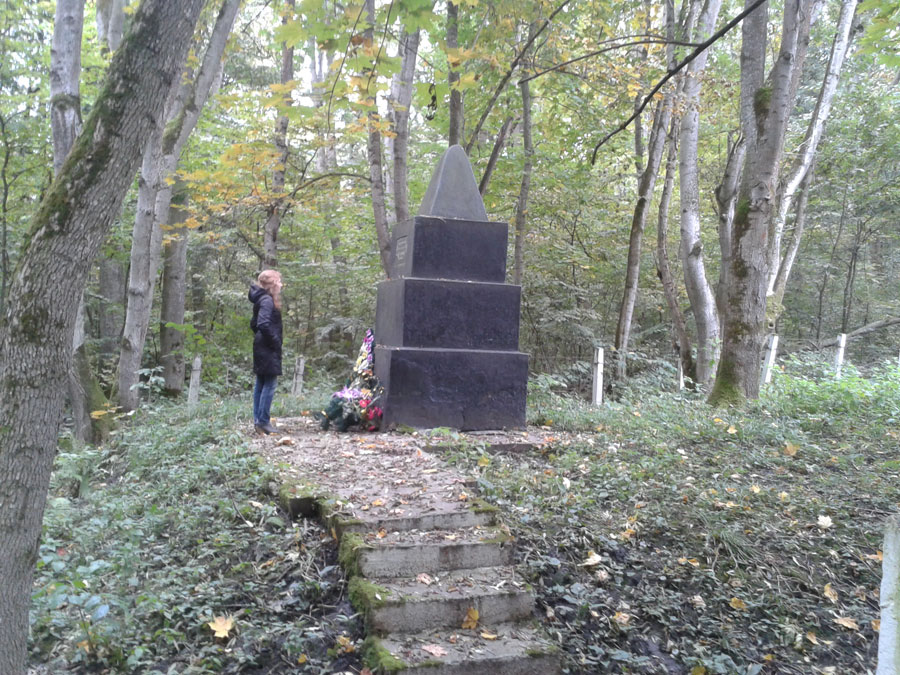
The rainy season is over and we (Nikolai and Natalya Pekarsky) finally broke out in the village of Manevtsy. On October 2, 2013, they visited the burial places near Manevtsy. Task: find out the status
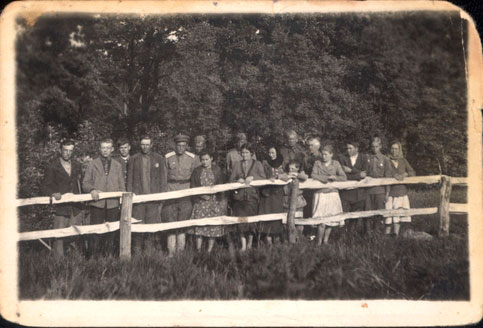
Near the mass grave of the victims of the Holocaust of the village of Manevtsy (Krasilovsky district, Khmelnitsky region., Ukraine). Photo from the Yad Vashem Museum.
February 6, 2013 “Hebrew Krasilov” visited mass graves near the village of Manevtsy.
The purpose of the visit was to find out where the graves are located and what their condition is.
For a long time, some of our readers and Jews who live abroad were interested in this issue. Today I will answer these questions.
The total length of the route from the center of Krasilov to the destination is approximately 25 km. In winter, the road takes about 1 hour.
In my opinion, the best time to visit the graves is the time in the second half of spring, summer and the beginning of autumn. The main thing is to be dry and warm.
In winter, the graves are difficult to access due to snow and lack of roads. In spring, you need to choose a time so that there is no rain and the earth is dry. Otherwise, the terrain is not passable. In general, there are two graves in the forest and one grave on the field.
A purpose of the visit was to find out where the graves are located and what their condition is.
For a long time, some of our readers and Jews who live abroad were interested in this issue. Today I will answer these questions.
The total length of the route from the center of Krasilov to the destination is approximately 25 km. In winter, the road takes about 1 hour.
In my opinion, the best time to visit the graves is the time in the second half of spring, summer and the beginning of autumn. The main thing is to be dry and warm.
In winter, the graves are difficult to access due to snow and lack of roads. In spring, you need to choose a time so that there is no rain and the earth is dry. Otherwise, the terrain is not passable. In general, there are two graves in the forest and one grave on the field.
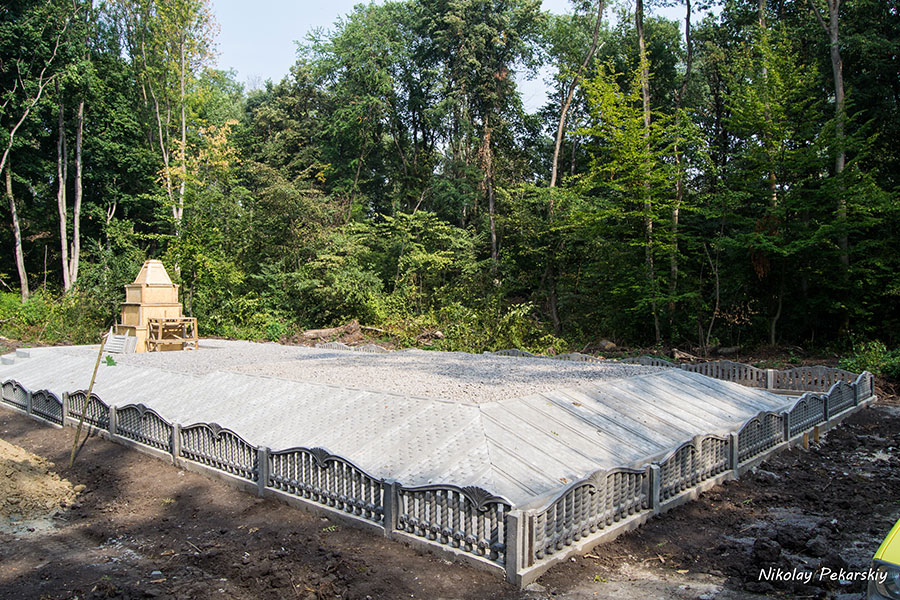
Manevtsy is a small village in Ukraine, near the city of Krasilov. Historically, Krasilov had a large Jewish community up until World War II, when Nazis occupied Ukraine.
During the period of time between May and September of 1942 Nazis and their local accomplices brutally murdered approximately 4800 women, children and elderly people near the villages of Manevtsy and Rosolovtsy. All of the people murdered in these inhuman actions were Jews.
There are total of three graves: two of them are in the forest near Manevtsy and the third one is in the field, near the village of Rosolovtsy.
Right after World War II, a small group of Jewish people returned to Krasilov and nearby settlements. Overcoming bureaucratic obstacles, they were able to raise money and erect monuments on all three graves in 1948 and 1961.
As the decades have passed, the condition of the monuments has deteriorated. In May of 2014 a special commission from the state’s Department of Culture determined that the monuments are beyond repair and need to be replaced.
In 2013, Krasilov native Nikolay Pekarskiy formed an initiative group from local citizens and Jewish diaspora with the goal to restore the monuments. Enough funds were collected to fully reconstruct one monument and start the reconstruction of the second one.
Construction work is in full swing on the first grave (please see the picture on the top of this page) and recently the restoration of the second grave has started. The plan is to finish the restoration of both graves located in the forest near Manevtsy by the end of this year. The third grave, near the village of Rosolovtsy, will be rehabilitated in 2016, but it will be very hard to accomplish without adequate funding.
My mom was born and raised in Krasilov after WWII. To my shame, I learned about the mass graves near Krasilov and the project to rehabilitate them only recently. I was very upset to see the lamentable state of the monuments. After finding a picture online of my grandparents visiting the graves in Manevtsy in 1947, I knew I had to get involved in this project.
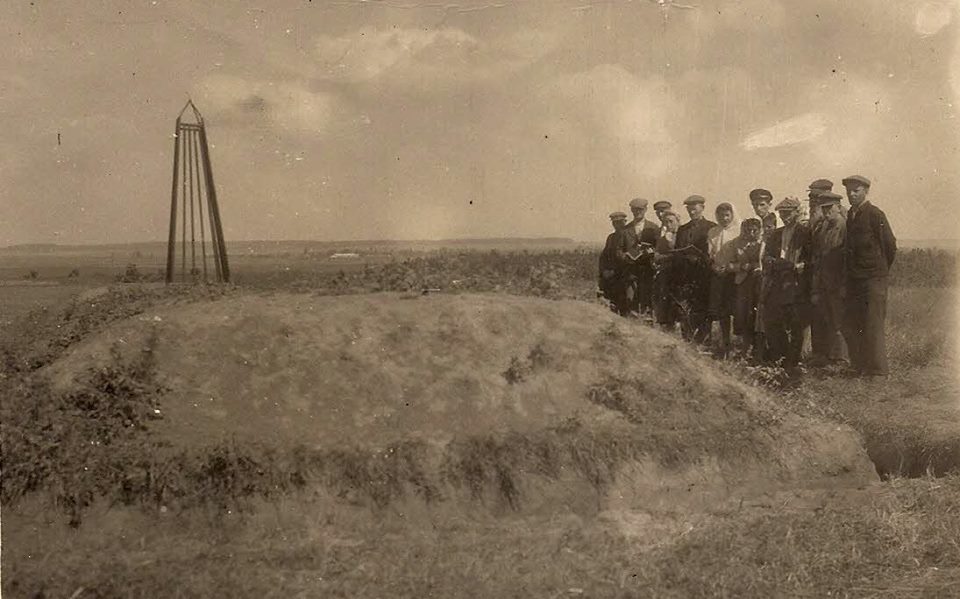 1947
1947
My grandparents visiting the graves
Dear friends, family, coworkers and caring people around the world, please help us raise the funds needed to finish the rehabilitation of the monuments!
For many of us the place of death and burial of the loved ones murdered during WWII remains unknown until today. I consider myself ‘lucky’ because I know that my ancestors are buried in one of the mass graves near Krasilov. Unfortunately, there are many mass graves in Ukraine. The Ukrainian government takes care of the big, commonly known monuments. Smaller monuments, like the ones in Manevtsy and Rosolovtsy, are not properly maintained.
No traces of the Jewish community are left in Krasilov and neighboring settlements. They’ve been ruined and forgotten. The mass Jewish graves in Manevtsy and Rosolovtsy remain as the only reminder of a long Jewish presence in this area. Restored monuments will remind the current and future generations about the Jewish people that lived in the area up until 1942 and of the Nazi’s brutality in murdering them solely because they were Jewish.
We have to REMEMBER. We owe it to all future generations and ourselves. Remember to keep fighting discrimination. Remember to avoid inhumanity. Remember to prevent brutal murders of the innocent.
If you lost a loved one during the Holocaust or any other tragic event, if you suffer any type of discrimination, or if you are simply a good-hearted person willing to help, please donate any amount you can to continue this project. All donations, big or small, will be greatly appreciated.
Make a difference – donate today!

Big mass grave before the restoration (approximately 2500 Jewish people were murdered here).
Photo taken in 11-04-2015.
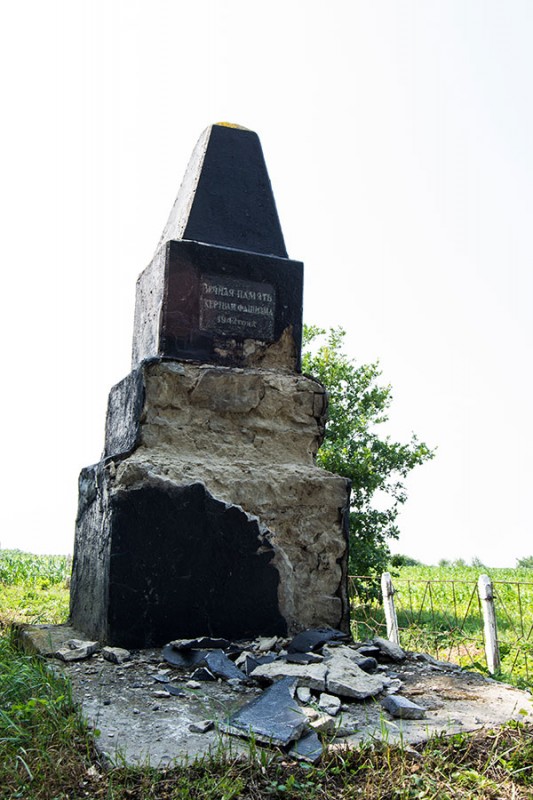
Second mass grave before the restoration (approximately 2000 Jewish people were murdered here)
Photo taken in July of 2015.

Third mass grave monmuiment before the restoration. (Photo taken 02-10-2015.)
Approximately 300 Jewish people were murdered here)